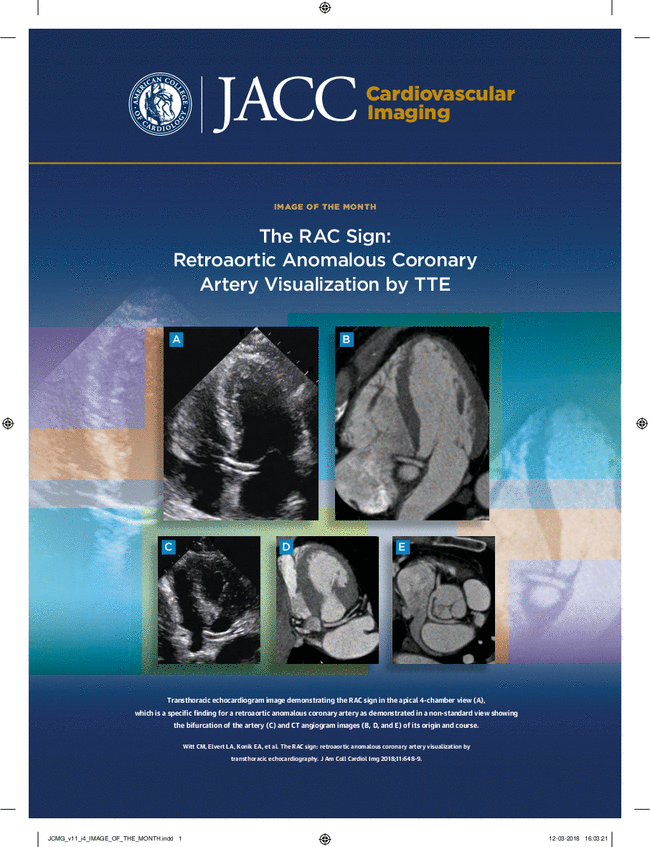Prognostication and Interventional Guidance Using Acceleration-Ejection Time Ratio in Undifferentiated Paradoxical Low-Flow Low-Gradient Aortic Stenosis
IF 12.8
1区 医学
Q1 CARDIAC & CARDIOVASCULAR SYSTEMS
引用次数: 0
Abstract
Background
Studies in paradoxical low-flow low-gradient aortic stenosis (PLFAS) have demonstrated conflicting outcomes with variable survival advantage from aortic valve replacement (AVR). PLFAS is a heterogeneous composition of patients with uncertainty regarding true stenosis severity that continues to confound decision-making for AVR.
Objectives
The purpose of this study was to investigate the utility of the Doppler acceleration (AT) to ejection (ET) time ratio (AT:ET) for prediction of prognosis and benefit from AVR in undifferentiated PLFAS.
Methods
Patients with echocardiographic findings of PLFAS (aortic valve area <1.0 cm2 or indexed aortic valve area <0.6 cm2/m2, mean gradient <40 mm Hg, indexed stroke volume <35 mL/m2, and left ventricular ejection fraction ≥50%) were identified and grouped according to an AT:ET cutoff of 0.35. The primary outcome was a 5-year composite of cardiac mortality or AVR. Secondary outcomes included the individual components of the primary endpoint and all-cause mortality at 5 years. Effect of AVR was analyzed in the AT:ET <0.35 and ≥0.35 groups.
Results
A total of 171 PLFAS patients (median age 77.0 years, 57% women) were followed for a median of 8.9 years. AT:ET ≥0.35 was an independent predictor of the primary outcome (HR: 4.77 [95% CI: 2.94-7.75]; P < 0.001) with incremental value over standard indices of stenosis severity (net reclassification improvement: 0.57 [95% CI: 0.14-0.84]). AT:ET ≥0.35 also remained predictive of increased cardiac death (HR: 2.91 [95% CI: 1.47-5.76]; P = 0.002) and AVR (HR: 8.45 [95% CI: 4.16-17.1]; P < 0.001), respectively, following competing risk analysis. No difference in all-cause mortality was observed. AVR in the AT:ET ≥0.35 group was associated with significant reductions in 5-year cardiac (HR: 0.09 [95% CI: 0.02-0.36]; P < 0.001) and all-cause mortality (HR: 0.16 [95% CI: 0.07-0.38]; P < 0.001). No improvement in survival from AVR was demonstrated in AT:ET <0.35 patients.
Conclusions
AT:ET ≥0.35 in PLFAS predicts poorer outcomes and/or need for AVR. In undifferentiated PLFAS patients, AT:ET may have a potential role in improving patient selection for prognostic AVR.
利用加速度-射血时间比对未分化型低流量低梯度主动脉瓣狭窄进行诊断和介入指导
背景:对矛盾性低流量低梯度主动脉瓣狭窄(PLFAS)的研究表明,主动脉瓣置换术(AVR)的生存优势各不相同,结果也相互矛盾。PLFAS 患者的构成不尽相同,其真实狭窄严重程度不确定,这继续对 AVR 的决策造成困惑:本研究旨在探讨多普勒加速(AT)与射血(ET)时间比值(AT:ET)在预测未分化的 PLFAS 患者的预后和从 AVR 中获益方面的实用性:确定了超声心动图检查结果为 PLFAS 的患者(主动脉瓣面积 2 或指数化主动脉瓣面积 2/m2、平均梯度 2 和左室射血分数≥50%),并根据 AT:ET 临界值 0.35 进行分组。主要结果是心脏死亡率或 AVR 的 5 年综合结果。次要结果包括主要终点的各个组成部分和 5 年的全因死亡率。AVR的效果在AT:ET结果中进行分析:共有 171 名 PLFAS 患者(中位年龄 77.0 岁,57% 为女性)接受了中位 8.9 年的随访。AT:ET≥0.35 是主要结果的独立预测指标(HR:4.77 [95% CI:2.94-7.75];P <0.001),与狭窄严重程度的标准指数相比具有增量价值(净再分类改进:0.57 [95% CI:0.14-0.84])。在进行竞争风险分析后,AT:ET ≥0.35也仍可分别预测更高的心源性死亡(HR:2.91 [95% CI:1.47-5.76];P = 0.002)和AVR(HR:8.45 [95% CI:4.16-17.1];P < 0.001)。全因死亡率无差异。AT:ET≥0.35 组的 AVR 与 5 年心脏死亡率(HR:0.09 [95% CI:0.02-0.36];P <0.001)和全因死亡率(HR:0.16 [95% CI:0.07-0.38];P <0.001)的显著降低相关。结论:AT:ET 患者的 AVR 存活率没有改善:PLFAS 中 AT:ET≥0.35 的患者预示着较差的预后和/或需要进行 AVR。在未分化的 PLFAS 患者中,AT:ET 在改善预后性 AVR 患者选择方面具有潜在作用。
本文章由计算机程序翻译,如有差异,请以英文原文为准。
求助全文
约1分钟内获得全文
求助全文
来源期刊

JACC. Cardiovascular imaging
CARDIAC & CARDIOVASCULAR SYSTEMS-RADIOLOGY, NUCLEAR MEDICINE & MEDICAL IMAGING
CiteScore
24.90
自引率
5.70%
发文量
330
审稿时长
4-8 weeks
期刊介绍:
JACC: Cardiovascular Imaging, part of the prestigious Journal of the American College of Cardiology (JACC) family, offers readers a comprehensive perspective on all aspects of cardiovascular imaging. This specialist journal covers original clinical research on both non-invasive and invasive imaging techniques, including echocardiography, CT, CMR, nuclear, optical imaging, and cine-angiography.
JACC. Cardiovascular imaging highlights advances in basic science and molecular imaging that are expected to significantly impact clinical practice in the next decade. This influence encompasses improvements in diagnostic performance, enhanced understanding of the pathogenetic basis of diseases, and advancements in therapy.
In addition to cutting-edge research,the content of JACC: Cardiovascular Imaging emphasizes practical aspects for the practicing cardiologist, including advocacy and practice management.The journal also features state-of-the-art reviews, ensuring a well-rounded and insightful resource for professionals in the field of cardiovascular imaging.
 求助内容:
求助内容: 应助结果提醒方式:
应助结果提醒方式:


